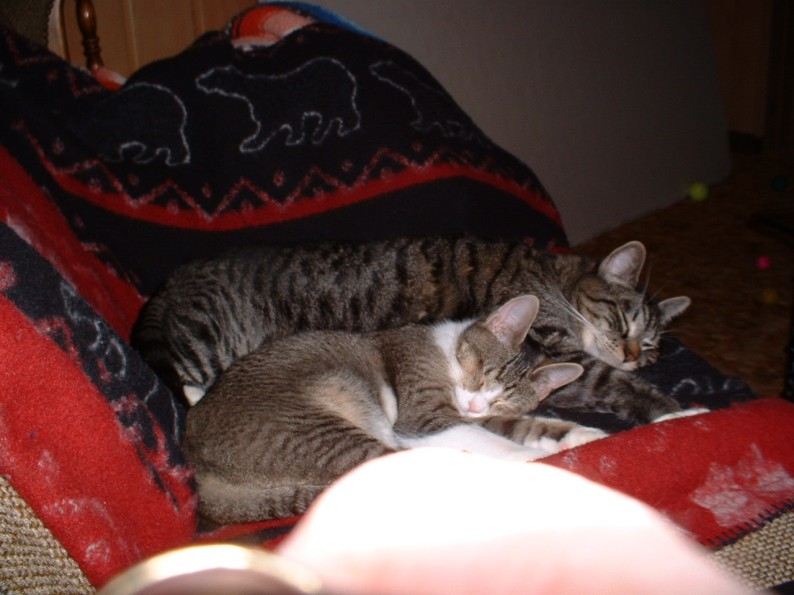And now. . . .the news from the EEFPress report: "Chain Reaction"
http://www.egypttoday.com/article.aspx?ArticleID=7105"News of the Ministry of Electricity and Energy’s plan to
set up a nuclear power plant in the North Coast Daba’a
region has come as a shock to Dr. Zahi Hawass (..)
According to Hawass, the entire stretch between Alexandria
and Marsa Matrouh, including Daba’a, is riddled with ruins
covering the Ancient Egyptian, Greek and Roman eras. "
[The report confirms that it concerns the ancient site of
Zephyrium, as was suggested in EEFNEWS (438).]
Dietrich Raue, Cornelius von Pilgrim, Felix Arnold, Roberta
Cortopassi, E. Endenburg, Eva-Maria Engel, Julia Gresky, Jana
Jones, Peter Kopp, Aleksandra Kozak, Nikolaos Roumelis,
Michael Schultz, Stephan J. Seidlmayer, A. Veldmeijer, Report
on the 35th season of excavation and restoration on the
island of Elephantine. - 25 pp., pdf-file (2.5 MB)
http://www.dainst.org/medien/en/daik_ele35_rep_en.pdf"The 35th season of the German Institute of Archaeology and
the Swiss Institute for Architectural and Archaeological Research
on Ancient Egypt at Elephantine was carried out from October 31st
2005 till April 20th 2006. The work on the finds collected in past
seasons was continued. The small finds, pottery from the Old Kingdom,
Nubian pottery, seal impressions of the Old Kingdom, pottery of the
Greek-Roman and Late Roman Period, lithic finds, textiles as well
as human and animal bones were studied. The epigraphic documentation
of the Graeco-Roman temples of Satet and Khnum, as well as the
survey on rock-inscriptions, was continued. Restoration work focussed
on the central part of the town of the Third Millennium BC. Small scale
investigations were carried out in the building complex of the late Old
Kingdom, in the temple of Khnum and its later occupation, the strata
of the Middle Kingdom opposite the Festival Courtyard, and the
occupation levels of the late 2nd Millennium south of the sanctuary
of Heqaib."
* Dietrich Raue, Felix Arnold, Morgan de Dapper, Ruth Duttenhöfer,
E. Endenburg, Julia Gresky, Thomas Hikade, Peter Kopp, Oleksandra
Kozak, Nikolaos Roumelis, Teodozja Rzeuska, M. Schultz,
A. Veldmeijer, Report on the 34th season of excavation and restoration
on the island of Elephantine. - 28 pp., pdf-file (3.2 MB)
http://www.dainst.org/medien/en/daik_ele34_rep_en.pdf""The 34th season of the German Institute of Archaeology and the
Swiss Institute for Architectural and Archaeological Research on
Ancient Egypt at Elephantine was carried out from October 18th
2004 till March 30th 2005."
* Dietrich Raue, Cornelius von Pilgrim, Martin Bommas, Roberta
Cortopassi, A. von den Driesch, Daniel Keller, Thomas Hikade,
Peter Kopp, Joris Peters, Beatrice von Pilgrim, Sophia Schaten,
Teyde Schmidt-Schultz, Michael Schultz, Stephan Johannes
Seidlmayer, Report on the 33rd Season of Excavation and
Restoration on the Island of Elephantine. - 28 pp., pdf-file (3 MB)
http://www.dainst.org/medien/en/daik_ele33_rep_en.pdf"The 33rd season of the German Institute of Archaeology and
the Swiss Institute for Architectural and Archaeological Research
on Ancient Egypt at Elephantine was carried out from October
25th 2003 till December 23rd 2003, and from 13th January till
6th April 2004."
Amanda-Alice Maravelia, "Two Faience Shabtis from the Egyptian
Collection at the Benaki Museum", in: Mouseio Benaki, 2, 2002 [2003],
pp. 19-24. In PDF, 280 kB.
http://www.archive.gr/publications/egyptology/Maravelia_Benaki.pdf"In this article we study two faience shabtis from the small Egyptian
Collection of the Benaki Museum in Athens. [Earlier digitized articles
by Amanda-Alice Maravelia in this "archive.gr" venue may be found
in EEFNEWS (415) and (416).]
End of EEF news





